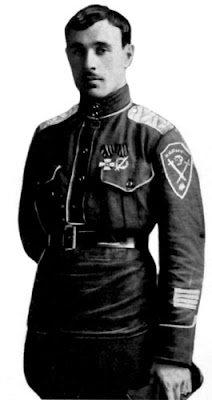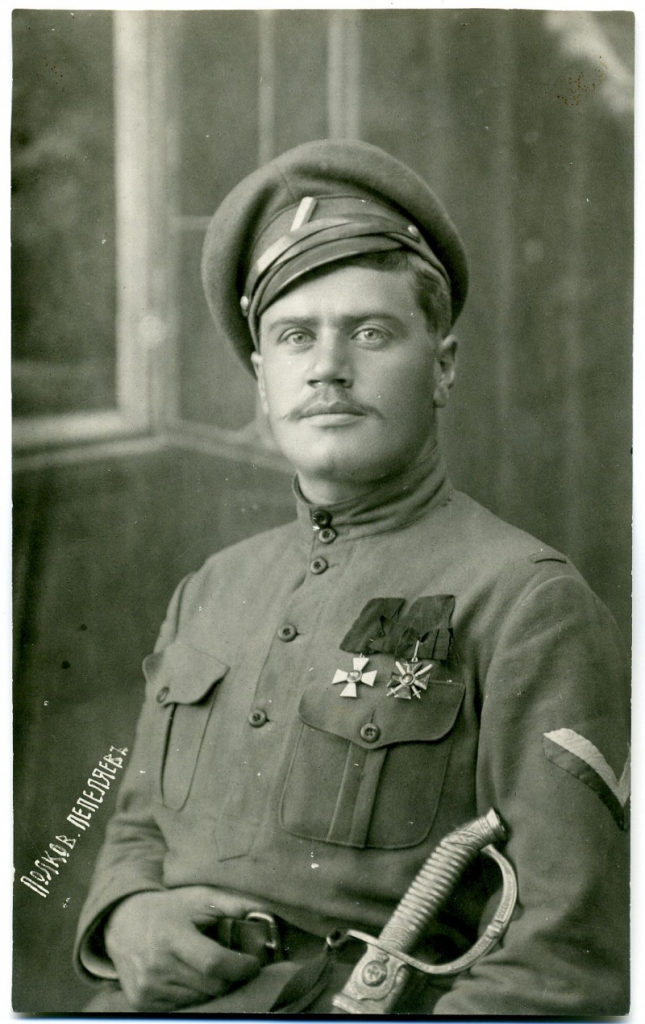But if Royal Yugoslavia might have a similar movement to the Mladorossi movement, it would obviously be ORJUNA or possibly a more radical movement that might emphasize on keeping the monarchy as a figurehead while its generals actually rule, kinda like OTL Imperial Japan. Also, I've toyed with the idea of splitting the Chetnik movement as well into two camps which I will talk about later on, but spoiler alert: one of them becomes the analogue to Kosta Pecanac's Chetnik faction. I am not sure if I should keep Alexander of Yugoslavia alive or not but there will be some sort of assassination attempt. However, I'm thinking about the possibility of either having Radic alive for a bit longer, or some other royal family member. Now it's back to the TL.
---
Case Study: Europe and Turkey
Turkey’s situation in the aftermath of the Russo-Armenian occupation of Kars had declined even lower, while the combined Allied and Greek armies had just completed their Summer Offensive and had been busy mopping up the remains of the Turkish resistance forces. Between November of 1920 and January of 1921, the Grand National Assembly began to reorganize the Turkish resistance forces into a new army, the Duzenli Ordu. The Duzenli Ordu could not give out the official number of its soldiers in its inception, but new recruits for the Duzenli Ordu mainly came from the Turkish resistance forces, as well as the pro-Ottoman Caliphate Army, many of these soldiers in said Army had began to mutiny against their officers and defected to the Grand National Assembly. By the time the Duzenli Ordu was ready to fight against the occupying forces, it was numbered around 90,000 soldiers. Unfortunately, the Duzenli Ordu was handicapped by the lack of heavy weapons, as indicated by the absence of artillery pieces and mortars. As a result, they had to forage the abandoned battlefields for any useable artillery weapons left behind by the victorious Allied forces. The first real test for the Duzenli Ordu occurred in January of 1921 when Greek Army units launched an operation to capture an important rail station at the town of Inonu. The Turkish fortunes continued its decline when a Circassian militia leader named Cerkes Ethem turned against the new government in Ankara for unknown reasons. Stretched to the limit, the Turkish troops also had to contend with a long French siege at Aintab and various Circassian revolts against the nationalist government because of their loyalty to the Ottoman sultan. The Caliphate Army however, managed to replenish its depleted forces with the integration of anti-GNA Circassian militias under the Sultan’s control. Eventually the Greek Army would be forced to dig in and to allow Cerkes Ethem’s rebel militia to escape through a French warship that was docked in Bursa. Cerkes’s militia was then integrated into the Caliphate Army on January 18th, 1921, giving the Grand National Assembly yet another rebel force to suppress.
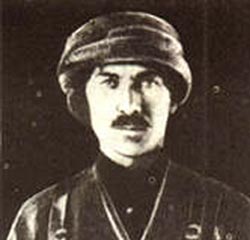
Cerkes Ethem was one of the Circassian militia leaders who was integrated into the Sultan's Caliphate Army. With the capture of the Grand National Assembly in Ankara, Ethem eventually became a warlord in his own right, controlling two provinces in the Black Sea Coast: Samsun and Sinop.
While the Turkish forces continued their retreat through Central Anatolia, the Greek Army based in Bursa waited for White Russian reinforcements to arrive. The Pepelyanev-led Russian Expeditionary Force in Anatolia arrived on the outskirts of Eskisehir by January 27th while informing General Papoulas that Admiral Kolchak’s Siberian legions will not participate in the war due to a revolt in Georgia led by the Bolshevik remnant force under Dzhugashvili’s leadership. Papoulas did not panic; he knew that with enough Allied aid, the Greek Army will eventually defeat Ataturk’s Grand National Assembly long enough to impose a much harsher penalty on the ailing Ottoman Empire. Between January and July of 1921, Papoulas’s forces continued to wait for fresh reinforcements to arrive from the Greek homeland while three divisions consisting of Greek veterans of the Greco-Bulgarian conflict were formed to combat the Duzenli Ordu. Within those six months however, the Russo-Armenian coalition forces had to stop by Georgia to suppress the Bolshevik remnant movement, of which Dzhugashvili and Lavrenti Beria both led. Three major battles were fought between the Bolshevik remnants on one side and the Georgian and Russo-Armenian forces on the other side: Kutaisi (February 1921), Tbilisi (April 1921) and Poti (July 1921).
Kutaisi Operation:
The Georgian Democratic Republic’s military was understaffed and poorly armed by the time Dzhugashvili’s insurrection broke out, while the People’s Guard of Georgia may have been better armed, they suffered from shortage of troops. Even worse, the Bolshevik remnants have gained control of the Roki Tunnel and Tskhinvali, cutting off the White Russian forces between South Ossetia and the North Caucasus. With the cutoff, Beria’s squad managed to acquire Fedorov Avtomat rifles that were earmarked for Wrangel’s White Russian forces, making the conflict difficult to solve. Luckily, Wrangel decided to send his rising star Tukhachevsky to meet with Georgian General Grigori Kvintadze to discuss a potential military alliance against Dzhugashvili’s militants. At first, the Georgian military leadership was reluctant to coordinate their efforts with their former overlords but Armenian General Ozanian offered to train the Georgian Army in modern warfare through selecting officer cadets and sending them to study in Russian military schools. Finally, Kvintadze issued his request for the People’s Guard of Georgia to fight as a separate unit but Armenian officers can take command of three regiments in order to give the Georgian troops some combat experience. Thus the Kutaisi Operation began on February 15th, 1921 when the People’s Guard of Georgia launched its attacks on Beria’s stronghold in Mtskheta. The attack had been repulsed in the first three hours as Beria’s defenses also managed to stop an Armenian counteroffensive from the west. The Kutaisi Operation however, was mainly a Georgian-Armenian operation with minimal White Russian assistance. Armenian Revolutionary Federation troops stationed in the Armenian border town of Ptghavan were given orders to move into southern Georgia to prevent the Bolshevik remnant troops from reinforcing Mtskheta. Yet despite the Armenian progress in distracting Beria’s forces long enough to allow Georgian troops to advance deeper into Mtskheta, the Bolshevik remnant forces continued to throw them back. As a result, Wrangel came up with a second operation to retake their supply route in Tskhinvali. The second phase of the Kutaisi Operation involved multiple thrusts from the north and the south. It was this phase of the Kutaisi Operation that Admiral Kolchak’s Siberian Legion finally went into battle. By February 19th, Kolchak’s Siberian Legion and Wrangel’s Russian volunteers made plans to link up in Tskhinvali by attacking the Bolshevik remnant forces with heavy artillery bombardment. By 1800 hrs, Wrangel’s artillery pounded Tskhinvali while Kolchak’s army began to march southward with the Kuban and Terek Cossacks advancing alongside them. As with Wrangel and Ozanian, Kolchak’s expanded forces had trouble getting through the Caucasus Mountains and various bandits would often harass them even if they were stuck in the snowy mountain passes. Eventually they managed to capture two important roads: the Georgian Military Road that connects Tblisi and Vladikavkaz and the Ossetian Military Road. The Ossetian Military Road connects Kutaisi itself with Alagir, and its control by Kolchak’s forces will allow him to swing into Kutaisi in order to capture it. With the White Russian control of those two important roads, the Bolshevik remnant forces tried their best to stop the White Russian advance but soon retreated towards Mtskheta, abandoning Kutaisi in the process. Upon capturing Kutaisi on February 26th, Kolchak’s forces called upon Wrangel’s Russian Volunteer Army to capture the town of Gori. Though Gori did not hold a military significance, its status as Dzhugashvili’s hometown was enormous. To prevent the White Russian movement from scoring a propaganda coup against the Bolsheviks, Dzhugashvili ordered Beria to retreat from Mtskheta and to meet him in the port city of Poti where a warship will take them out of Georgia. Thus, the Bolshevik remnant forces started to abandon their positions in Mtskheta but Dzhugashvili had no intention to surrender to the White movement. He wanted the Bolshevik underground to make arrangements for him and his allies to flee from Europe and into any country that is gullible enough to accept them as refugees. Fearing capture and most likely execution, Dzhugashvili sought to escape into Poti by whatever means necessary, even if the defeated Bolshevik movement were to continue fighting.
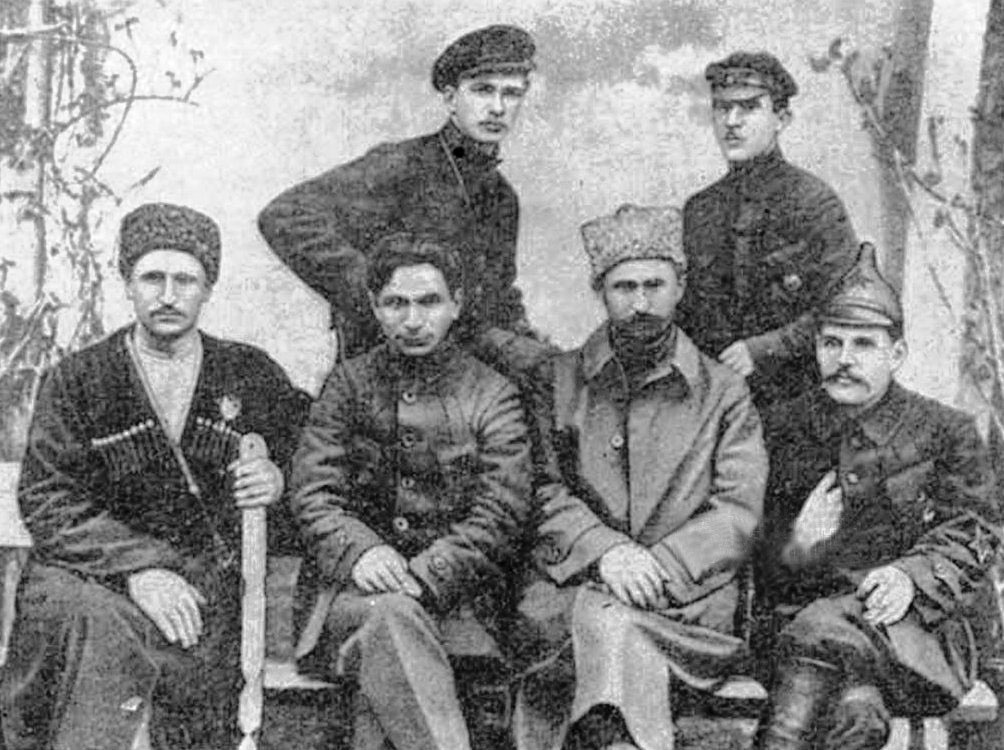
Bolshevik remnant forces fought hard against the People's Guard of Georgia, backed by White Russian weapons and Armenian soldiers. Their defeat in Iosef Dzhugashvili's homeland would force the Marxists underground, not to appear in a political spotlight until well into the 1930s.
Western Europe:
Western Europe however, was prone to syndicalist-inspired unrest in the aftermath of the Great War. In France especially, the syndicalist movements had gained momentum when news of the Bolshevik movement’s disintegration reached them in due part because they would not have to worry about being subordinated to what could have been a dictatorial, self-serving political party. However, the growing success of the counter-revolutionary movement only drove these syndicalist movements to desperate measures, such as initiating a series of walk-outs from workers’ workstations. While Makhno did arrive in Asia, his close friend Pyotr Arshinov ended up in Paris where he soon established a budding friendship with Vaillant Couturier, who recently joined the Communist movement despite said movement having no clear leadership at the moment. So when Dzhugashvili sent letters disguised in books meant to be delivered to other socialist leaders in Western Europe for help in acquiring a safe passage from Poti, Arshinov jumped at this chance to help the renegade Bolshevik escape. In April of 1921, a British civilian ship docked in Poti stayed in the port for repairs when three anarchist agents recruited by Arshinov arrived in Poti to greet the escaping Bolsheviks. Once Dzhugashvili and his friends met up with them, they entered the civilian ship with forged papers. It was also rumored that Dzhugashvili had to alter his appearance, including Arshinov’s recommendation that he get a haircut and to shave off his moustache. As soon as the Bolshevik escapees entered the ship in their disguises, the ship finally set sail for Marseilles where Couturier and his socialist agents waited for them. The trip took five weeks to complete, and by the time the Bolshevik escapees arrived in Marseilles, Couturier was forced to hide them in the city’s slums where the socialist underground was flourishing. However, Dzhugashvili was starkly reminded by Couturier that as long as the Bolshevik movement remains disintegrated, he and his friends will have to obey the orders from a newly established Socialist International that has taken a moderate socialist tone.
With the consolidation of the White Russian government in Moscow (ironically, Kolchak sarcastically “thanked” the Bolsheviks for coming up with a smart move to deny the Central Powers a chance to occupy Russia’s Petrine capital), Kerensky began to make desperate attempts to shore up a weak coalition with Kornilov and Viktor Chernov ruling alongside him. Kerensky’s choice of Chernov as one of his partners would ultimately lead to the fall of his own government and Kornilov’s full scale purge of leftists in the Russian government. As soon as Kerensky’s session in the Duma on May 9th opened, Kornilov summoned his subordinates in their first phase of the so-called March to Moscow. Once the leftists within the Kremlin were tricked into being summoned for a separate meeting, the military began to round them but Chernov managed to escape from the Kremlin while the military had gone into a shootout with anarchist bands that provided the distraction for the leftists to escape. Kerensky himself was not lucky: he was accidentally shot by one of the anarchist bandits who actually wanted to kill Kornilov for his role in weakening the anarchist movement based in Ukraine.
Mustafa Kemal Captured:
Fresh off their victory over the Bolshevik remnants in Georgia, the Russian and Armenian armies were bolstered by the Democratic Republic of Georgia’s entry into the Turkish War of Independence. As the People’s Guard of Georgia was gradually sent to the front lines, they were re-equipped with the Fedorov Avtomat sent by the White Russian movement through the reopened Roki Tunnel. As soon as news of Ataturk’s arrival in the town of Sakarya reached Wrangel, he relayed the message to Pepelyanev who in turn, sent the message to Papoulas. If Ataturk could be killed before he can deal any more damage to the Allied occupational forces, then the Turkish resistance movement could disintegrate long enough for the Ottoman Empire to be reorganized. However, Pepelyanev had to wait for more reinforcements to arrive and it did on July 10, 1921 when Kolchak’s troops from the Siberian Legion as well as the hastily made Bulgarian Expeditionary Force in Anatolia, commanded by Hristo Lukov. Though it was numbered by just 6,000 troops, Lukov’s Bulgarian Expeditionary Force in Anatolia provided an enormous source of potential recruits for the Karaul movement that is becoming influenced by the White Russian movement. Papoulas now felt confident enough to attack Sakarya with Russian and Bulgarian reinforcements backing him up. So on July 14th, the Greek Army started its offensive against the Duzenli Ordu on the outskirts of Sakarya. To distract the Duzenli Ordu forces under Ismet Inonu’s command, Pepelyanev and Lukov ordered their armies to attack nearby Eskisehir and to cut Inonu’s forces off from Mustafa Kemal’s main army. Prince Constantine of Greece, who was assigned an army division under King Alexander of Greece’s recommendation, managed to capture around 2,000 Turkish prisoners within just eight hours but the Turkish prisoners who were kept in Russian or Bulgarian captivity were not lucky. As Pepelyanev’s forces retreated, Inonu’s patrol squad came across an open ditch where 300 Turkish Duzenli Ordu lay dead. In Ankara, the Grand National Assembly pleaded their case to the Allied forces on Russian war crimes committed against the Duzenli Ordu. Although the British were appalled by the Russian behavior, they decided to punish the White Russian government with a very dangerous solution: they would give covert support to an unknown group called the Basmachi movement. The British hoped that by instigating the Central Asian Turkic rebels to fight the Russians, they would force the White Russian government to lessen their war crimes in Anatolia. This decision however, accelerated the Russian military’s politicization to the point where in the West a new movement gradually arose: the Young Slav movement.
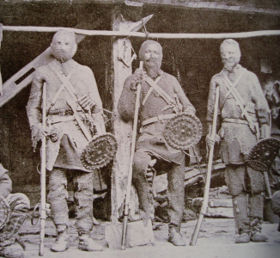
The Basmachi resistance movement was aimed at gaining independence for all of Central Asia's Turkic peoples. Enver Pasha had joined the Basmachi movement with a vision of a pan-Turkic Confederation that will unite the Central Asian Turkic peoples with the Anatolian Turks, the Azeris and the Uyghurs in Chinese Xinjiang.
Back in Sakarya, Papoulas’s forces entrenched themselves in almost all sides of the Sakarya River banks while Pepelyanev moved south towards the town of Polatti and Lukov’s Bulgarian forces moved to the Ova River. Artillery pieces moved constantly, albeit on a slow pace as Russian and Bulgarian cavalry troops were used to hack down any Turkish infantry position while Greek artillery was used to pound machine gun nests. The advance lasted for two and a half weeks, by which time Papoulas’s forces linked up with Pepelyanev’s army instead of Lukov’s forces. Ankara was only a few miles away from the growing front lines as Ataturk ordered his troops to retreat into the city. Unfortunately for the advancing forces, they didn’t have the Fedorov Avtomat rifles that the ARF and Wrangel’s forces possessed so urban warfare was inevitable. Yet despite all of that, the advancing invaders pushed forward into Ankara, finally overrunning Sakarya in the process. As Pepelyanev’s troops were soon ordered to stay behind as to not commit any more war crimes, they instead made contact with Lukov’s army and decided to give Papoulas logistical support. Pepelyanev sent a message to Wrangel for more weapons and ammunition by August 5th and his request for those provisions arrived three weeks later. There were good reasons for such delay, and that is because some of the weapons shipped into the front lines were requisitioned by the British authorities to reroute it into Central Asia, to the Basmachi rebels. Yet in a curious twist, the shipment of the Fedorov Avtomats had oddly ended up in Persian custody. With the loss of those extra weapons and ammunition, the advancing forces had to wait for one crucial week, and within those days Ataturk was able to set up defenses of Ankara with the Duzenli Ordu carrying out defensive projects like digging trenches and setting up machine gun and artillery nests. Once the British realized that Ataturk’s forces were eager to bleed the Greek Army dry, they deployed three small divisions under Sir William Birdwood. Birdwood also carried several tons of weapons and ammunition that the Greek Army requested by was under orders to not let Pepelyanev or Lukov get their hands on British weaponry. With British reinforcements, Ataturk also capitalized on the Battle of Ankara as the do-or-die moment. The Duzenli Ordu troops were given special rations made by civilians who worked nonstop to produce enough rations for the battle. Finally, the advancing forces struck at Ankara.
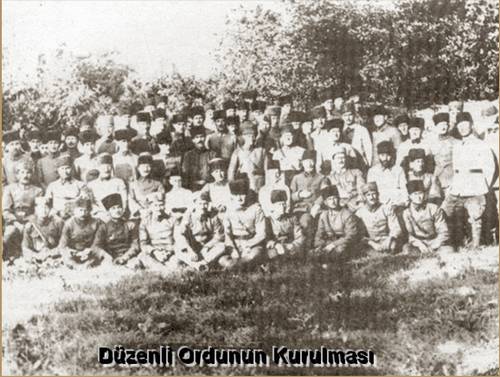
The Duzenli Ordu was reorganized from veterans of the Turkish national resistance movement and became a formidable fighting force, despite the handicaps they faced with the lack of heavy weapons and foraging the battlefields for abandoned rifles from dead Greek, White Russian and Allied soldiers.
Later historians suggested that the Battles involving Eskisehir and Sakarya itself should have been called the Sakarya-Ankara Offensive because the Greek Army did not just stop to capture Sakarya, but rather advance towards Ankara. Within the first three days of the Battle of Ankara, Ataturk fiercely conducted himself under heavy artillery fire by giving orders to lure the enemy into the city. Though neither the Greek Army and its allies nor the Duzenli Ordu had experience in urban warfare, Ataturk was determined to make every invader pay for their advance in blood. However, news from one of Karabekir’s former subordinate Halit Karsalan reported to his superior that a large enemy force consisting of Wrangel’s Russian forces, the ARF and the People’s Guard of Georgia were amassing in Kars and were poised to attack other parts of Turkey, especially the lands that were once earmarked for the proposed “Republic of Pontus” but Venizelos did not back such a proposal for a Greek homeland in the close vicinity of the Caucasus. Karsalan’s forces however, were now encircled by a large Georgian force under Valiko Jugheli’s command from the north and Drastamat Kanayan’s Armenian forces from the south while Pontic Greek rebels waited for Wrangel’s forces to arrive in order to shore up the stillborn Pontic Greek state. Back in Ankara, Ataturk continued to repel the enemy forces even as Papoulas continued to order his forces to advance. In the northern outskirts of Ankara, Pepelyanev’s army cut off the supply convoys coming from the city while rerouting those supplies into their own camp. Lukov’s forces on the other hand, were recalled from Ankara due to the Caliphate Army’s counteroffensive against the Bulgarian position in Odrin. Within those three weeks that Lukov’s Bulgarian forces went back to Bulgaria, Karsalan actually managed to repel Kanayan’s forces and even inflicted huge casualties on Jugheli’s forces. However, the Imperial Russian Navy’s Black Sea Fleet had been mobilized to aid the Pontic Greek rebels. The Russian battleship Imperator Aleksandr III was the only Russian warship that participated in a naval bombardment of Trabzon against Karsalan’s forces. The naval bombardment allowed Kanayan’s army to continue advancing into the city where Wrangel’s troops (minus Tukhachevsky this time because he was recalled to Moscow for political studies under the watchful eye of Kornilov and the soon to be named Young Slav movement) landed along with Kolchak’s Siberian Legion troops. By September 14, Trabzon was under Russian control but passed into the joint control of the Pontic Greek, Georgian and Armenian authorities. From Trabzon, Kolchak and Wrangel were able to ship more Russian weapons into Papoulas’s forces, allowing the Greek Army to operate the Fedorov Avtomat for the first time. However, Papoulas disliked the rifle because of technical issues which he took notes in his notebook and passed his assessments of the Fedorov Avtomat’s deficiencies to Pepelyanev. The British also took one Fedorov Avtomat for testing purposes while Pepelyanev wrote to Vladimir Fedorov on the negative reactions among his allies in response to their usage of the Fedorov Avtomat. Needless to say, Fedorov was sent into Trabzon to fight alongside the Pontic Greek and Armenian forces equipped with his rifle.
The Duzenli Ordu’s chances of winning the Battle of Ankara was unsure because new recruits were constantly arriving into Ankara on a daily basis that it’s hard to distinguish the new recruits from the former Turkish resistance troops. Without Lukov’s troops to back Papoulas’s forces and Pepelyanev’s army, it looked like Ataturk had a chance of at least forcing the invaders into a stalemate. Yet he understood too well that the White Russian movement had already committed atrocities against Turkish civilians and some of those soldiers might be connected to radical movements that have an anti-Turkish streak on them. Still, he directed his troops in an increasingly hopeless battle. However on September 21, while Ataturk was on a vehicle with a driver, a Greek machine gunner opened fire but missed. Immediately, a young colonel named Nikolaos Plastiras led a squad of Greek soldiers accompanied by one of Pepelyanev’s subordinates named Mikhail Meandrov (then a captain) and three of his soldiers also opened fire on Ataturk’s vehicle. Once Plastiras fired a shot that deflated the tire from Ataturk’s vehicle, thirty Duzenli Ordu troops reached their leader and fought back against Plastiras’s squad. It was then that another Greek squad, this time led by Stylianos Gonatas, threw three grenades from a ruined building into the ground. Ataturk was wounded in the stomach and leg but was successfully carried off by another vehicle driven by a reliable Duzenli Ordu soldier. It did not take long for Gonatas and Plastiras to catch up to the Duzenli Ordu forces driving the vehicle Ataturk was in before they were given new orders: Mustafa Kemal Ataturk was not to be killed, but captured alive. A difficult task to achieve, given the fact that Ataturk was even willing to commit suicide to deprive his enemies of the satisfaction should be captured in any situation. In any case, the advancing forces had gained 86% of Ankara’s districts but the Duzenli Ordu moved their headquarters to a tiny town called Gokceyurt. Here, Ataturk would make his last stand along with the exhausted Turkish defenders against Papoulas’s forces. News of Ataturk’s escape from Ankara to Gokceyurt reached Istanbul where Mehmed VI demanded that Ataturk be brought back to the ancient capital alive to stand trial. He also had on his wish list some prominent members of the Young Turk movement, most notably Enver Pasha and Mehmed Talat Pasha. In what was the most ironic twist of the Turkish War of Independence, Mehmed VI approached the ARF leadership and proposed a joint operation to apprehend the perpetrators of the Armenian Genocide, something that the Young Turk leaders would certainly have reacted negatively. It was precisely because of this proposal that Mehmed Talat Pasha called in a secret meeting with many other perpetrators of the Armenian Genocide and made plans to assassinate both Mehmed VI and the ARF delegates but that would require both parties to meet in Istanbul or some other parts of Turkey. However, before the Young Turk conspirators could begin to map out how they will kill their targets, tragedy struck the Young Turks.
Ataturk’s wounds worsened his health as soon as he arrived in a hospital on the outskirts of Gokceyurt. Already, he lost a quarter of blood by the time he ended up in the operating room. Even when the Duzenli Ordu retreated to Gokceyurt by September 24th, Papoulas had to allow Birdwood to advance into Gokceyurt while Pepelyanev’s forces had the same idea. Both the British and Pepelyanev’s army encircled Gokceyurt and confiscated supplies that are coming into the city. Within just two and a half days, all of Ankara and Gokceyurt were in the hands of the Greco-Allied forces. British troops managed to drag out the hospital staff that operated on Ataturk, along with Ataturk himself. Once they saw his wounds, Birdwood requested for medical assistance to the captured Turkish leader and British medics were able to patch him up long enough for him to be sent back to Istanbul. How his fate will be once he meets with Mehmed VI, no one knows. One thing for certain, the Turkish War of Independence has just become a war of national survival with Ismet Inonu catapulted into the spotlight.
